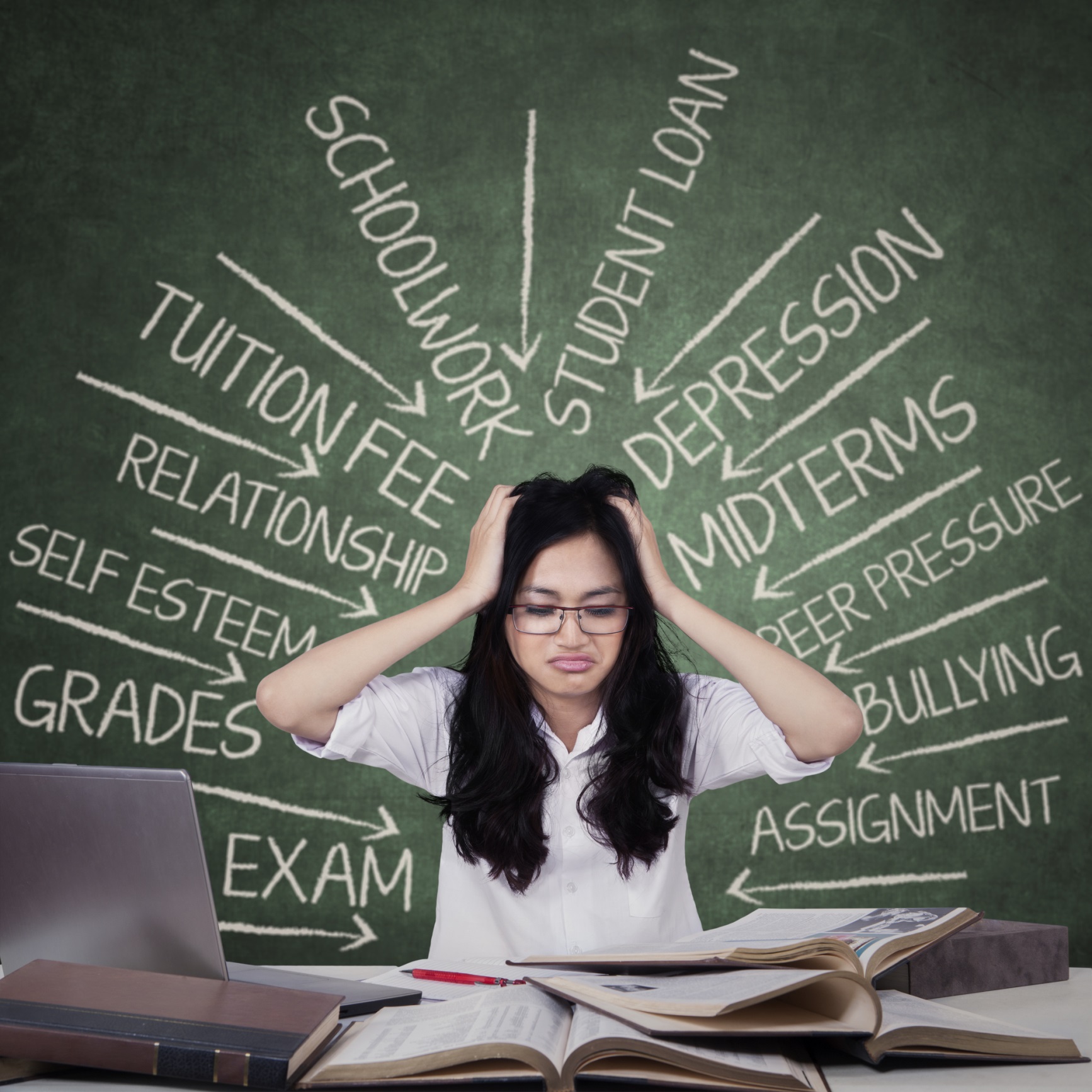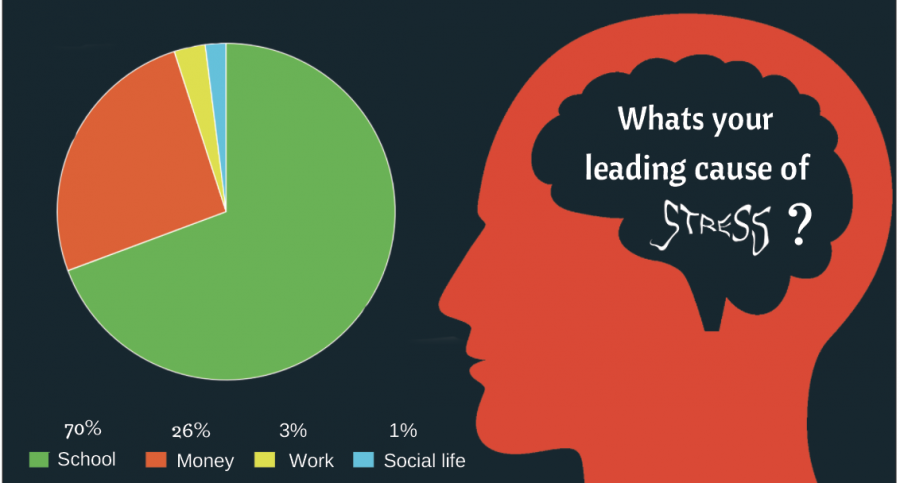STRESSED-OUT COLLEGE STUDENTS: HELP IS POSSIBLE

BY RIYA KANSARA – It’s easy to become stressed but much harder to become unstressed. We all have our own stress management rituals, ranging from taking a nap to taking a spontaneous road trip. With the recent expansion in outreach programs for stressed-out college students, the use of stress-relief techniques has only increased.
Stress is known to have numerous detrimental effects to health, both physically and mentally, especially to students. Constantly entering into novel environments requires adaptability, and unfortunately, new situations often lead to anxiety and nervousness. Nowadays, students are also inundated by new information and differing perspectives that may cause distress and misunderstandings. According to a survey by the American College Health Association-National College Health Assessment (ACHA-NCHA), over 20% of college-level students have been subjected to more than six heavily stress-inducing events within the past year. In this same time frame, one in four students have received treatment for or have been diagnosed with a mental illness. Ultimately, stress can lead to cardiovascular associated diseases, unmanageable pain, and other debilitating illnesses, highlighting the importance of its control in general populations.
 According to researchers, there are two important models used to describe how college students utilize stress reduction techniques, or SRTs. The first model is known as the Theory of Planned Behavior (TPB), which describes how behaviors are dependent on three types of belief: control, behavioral, and normative beliefs. Control beliefs involve whether or not we are confident and intelligent enough to make a decision. Behavioral beliefs are associated with how knowledge of the outcome of a situation affects our behavior. Lastly, normative beliefs describe how social relations control our behaviors.
According to researchers, there are two important models used to describe how college students utilize stress reduction techniques, or SRTs. The first model is known as the Theory of Planned Behavior (TPB), which describes how behaviors are dependent on three types of belief: control, behavioral, and normative beliefs. Control beliefs involve whether or not we are confident and intelligent enough to make a decision. Behavioral beliefs are associated with how knowledge of the outcome of a situation affects our behavior. Lastly, normative beliefs describe how social relations control our behaviors.
The second model, the Health Belief Model (HBM), describes how the combination of modifying factors, such as education, age, or income, and discrete beliefs leads to individual behavior and action. These two models, in combination with educational outreach on the topic of stress, help improve the use of STRs. According to the HBM, the presence of family and friends who utilize similar stress reduction techniques can also lessen the stress experienced by college students. Additionally, by learning from our past behaviors and striving toward improvement, students can learn to manage their stress and reduce it to a healthy level.
Recently, a study at the University of Houston examined the effects of stress management, how it works, and how it can be better promoted among college students. To measure the use of STR’s, students were given a survey. This survey involved questions about their symptoms and the actions being taken to prevent them. The results indicated that there are five primary techniques students used to prevent stress. The first technique, meditation, involves focusing on a single thought or object, which seeks to achieve a calm internal state of mind. Exercise was also frequently used to reduce nervous and to relieve muscle tension. Yoga specifically focuses on mind and body, along with mental relaxation. Focused breathing also reduces muscle tension and allows for a feeling of general relaxation. Lastly, progressive muscle relaxation (PMR) involves tensing the muscles before relaxing them. This technique helps condition the body to unconsciously relax when tensed from a stressful environment. By utilizing these techniques, students reported a reduction in their stress levels.
This research highlights the overall importance of stress-relieving techniques, what these techniques involve, and why they are used. Through openness to change and motivation, students participating in this study were able to learn effective strategies and achieve an internal state of relaxation. By further utilizing outreach programs and a focusing on mental health, students around the world can achieve a more stress-free environment and an overall healthier lifestyle.
